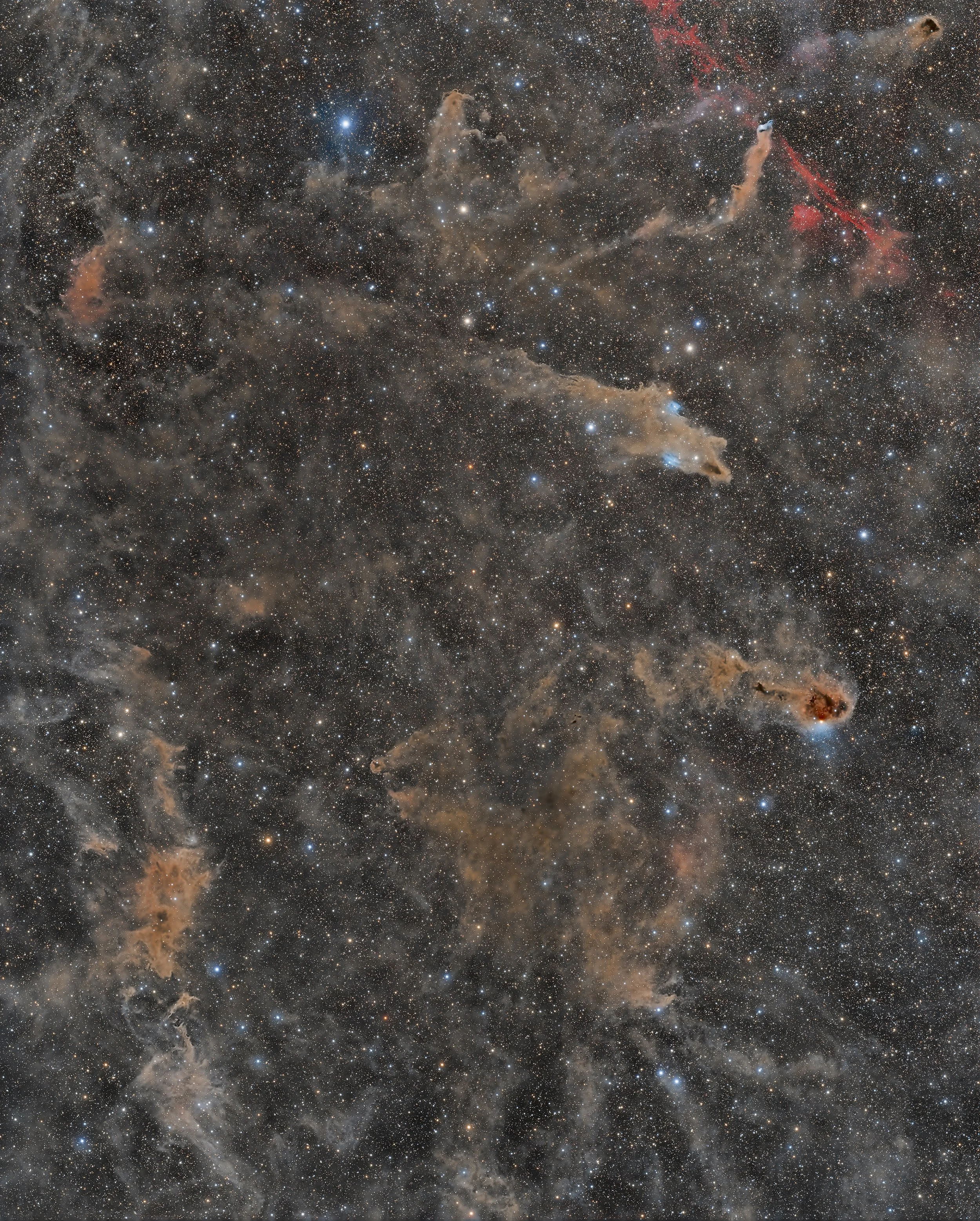
AAPOD2 Image Archives
Sort 2025 By Month: January | February | March | April | May | June | July | August | September | October | November | December
2 TILE MOSAIC OF MOLECULAR CLOUDS DUST IN CEPHEUS IN RGB-Ha
This 2-tile mosaic captures the intricate molecular clouds and dust lanes in the constellation Cepheus. The image is a blend of RGB and H-alpha data, showcasing the rich, colorful regions and the faint, wispy structures that are characteristic of these molecular clouds. The mosaic reveals the complex interplay of gas and dust, illuminated by the surrounding stars, creating a breathtaking tapestry of celestial beauty.
Cepheus is known for its dense molecular clouds, which are regions of active star formation. These clouds are composed of cold gas and dust, which can be seen as dark patches against the brighter background. The H-alpha data highlights areas of hydrogen gas ionized by the ultraviolet radiation from young, hot stars, adding depth and contrast to the image. This mosaic not only provides a visual feast but also offers valuable insights into the processes that govern star formation and the evolution of interstellar matter.
Cepheus and Cygnus
Cepheus, located in the northern hemisphere, boasts a remarkable emission nebula called the "Wizard Nebula" (NGC 7380), which exhibits a striking resemblance to a wizard casting a spell across the cosmos. Cygnus, also known as the "Swan," features the famous North America Nebula (NGC 7000), a vast cloud of gas and dust in the shape of the continent, captivating observers with its resemblance to the familiar shape of the North American continent.
Elephant's Trunk Nebula - IC1396
INFO
IC 1396 spans hundreds of light years at distance of about 3000 light years in constellation Cepheus. The famous formation of glowing gases, the "Elephant's Trunk Nebula" can be seen at four o'clock position. This is an active star formation region and it has several massive young stars inside it, coursing the ionization of elements of this emission nebula.
Technical details Processing workflow Image acquisition, MaxiDL v5.07. Stacked and calibrated in CCDStack2. Deconvolution with a CCDStack2 Positive Constraint, 33 iterations, added at 50% weight Color combine in PS CS3 Levels and curves in PS CS3. Imaging optics Tokina AT-x f2.8 camera lens Mount 10-micron 1000 Cameras and filters Imaging camera Apogee Alta U16 and Apogee seven slot filter wheel Guider camera, Lodestar x 2 and an old spotting scope of Meade LX200
Astrodon filters,
5nm H-alpha 3nm S-II and 3nm O-III Total exposure time for all of the four panels
H-alpha, 12 x 600 s, binned 1x1 = 2 h
O-III, 6x 600 s, binned 4x4 = 1 h.
S-II, 3 x 600 s. binned 4x4 = 0,5 h
Copyright: J-P Mets̈avainio




